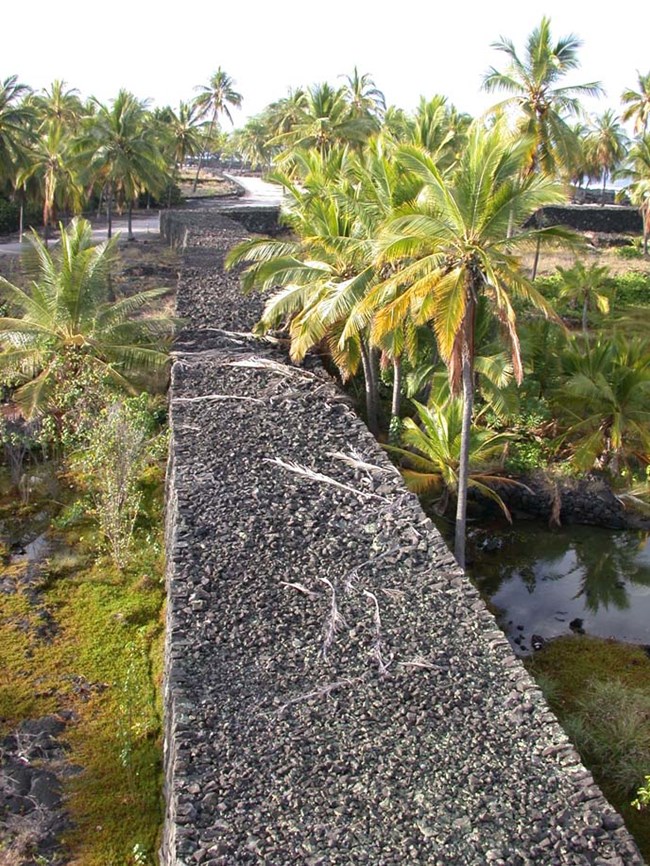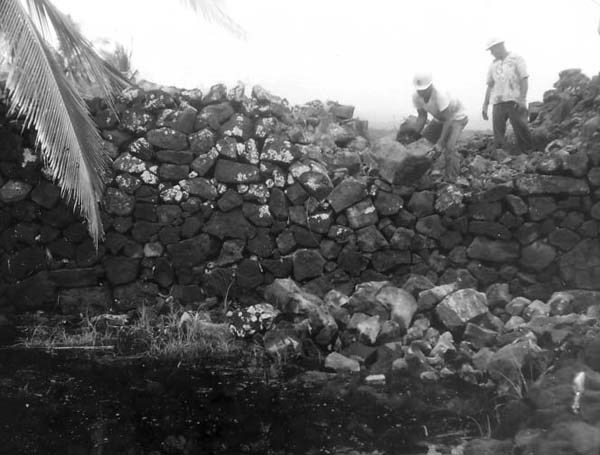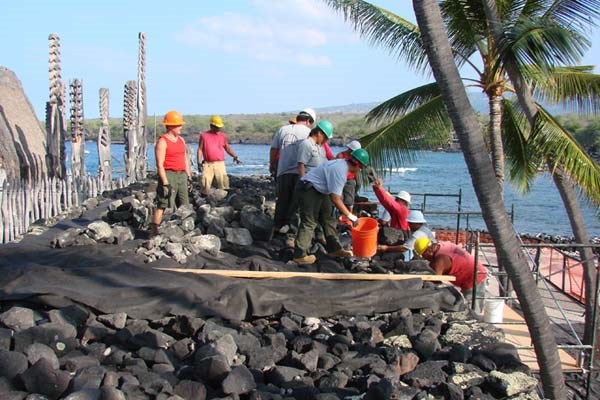|
Visit our keyboard shortcuts docs for details
Learn how the National Park Service Archaeologists and Resource Management crews preserve ancient and historical structures continuing the tradition of uhau humu pōhaku, or Hawaiian Dry-Set Masonry. 
NPS Photo The Great WallThe Great Wall, or Pā Puʻuhonua, is a massive L-shaped structure that bounds the puʻuhonua on its eastern and southern sides. The wall stands nearly 12 feet tall, 18 feet in width, and stretches 965 feet in length. Constructed over 400 years ago, the Great Wall continues to protect the puʻuhonua, the people, and ceremonial sites contained within from the outside world. The Great Wall was built using traditional, dry masonry techniques in which unmodified cobbles and boulders were fitted together without the use of mortar. The structure was originally constructed with two outer walls faced with 'alā (volcanic stones, often water worn and with smooth faces). Archaeological investigations conducted in the 1919 and 1963 revealed two distinct techniques of masonry design within the interior of the structure. The first style, known as pa'o (caverned), is an open work construction technique accomplished by laying lava slabs on top of upright columns. This architectural style is unique to the park lands and, thus far, has been documented nowhere else on the Hawaiian Archipelago. The other type of interior construction noted within the Great Wall is haka haka or vacant spaces. Commonly used throughout Hawaiʻi Island, haka haka uses broken, angular stone rubble to fill the interior cavity of the outer walls. Given the sheer size of the Great Wall, it remains a prominent feature on the park's landscape and therefore was the subject of numerous historical testimonies regarding the puʻuhonua. One of the earliest and well-known accounts was given by Reverend William Ellis in 1823. Ellis, both a missionary and ethnographer, noted the following:

Pu‘uhonua o Hōnaunau National Historical Park, PUHO 107 Beginning as early as 1902, the Great Wall was repaired and stabilized on a number of occasions. One such project occurred in 1919 under the direction of archaeologist J.F.G. Stokes. This work included extending the southern wall to the west an additional 20 to 30 feet, much of which was subsequently washed away by high surf and never rebuilt. 
NPS Photo In the last two decades, the park has initiated at least six other stabilization projects with the most recent efforts occurring in 2010 when park masons stabilized four sections of the Great Wall that were in need of repair work. To learn more about traditional Hawaiian dry-set masonry and the skilled masons employed by the National Park Service, watch the video documentary, "Stories in Stones: Living History of Hawaiian Dry Set Masonry" at the top of the page. |
Last updated: May 26, 2020
